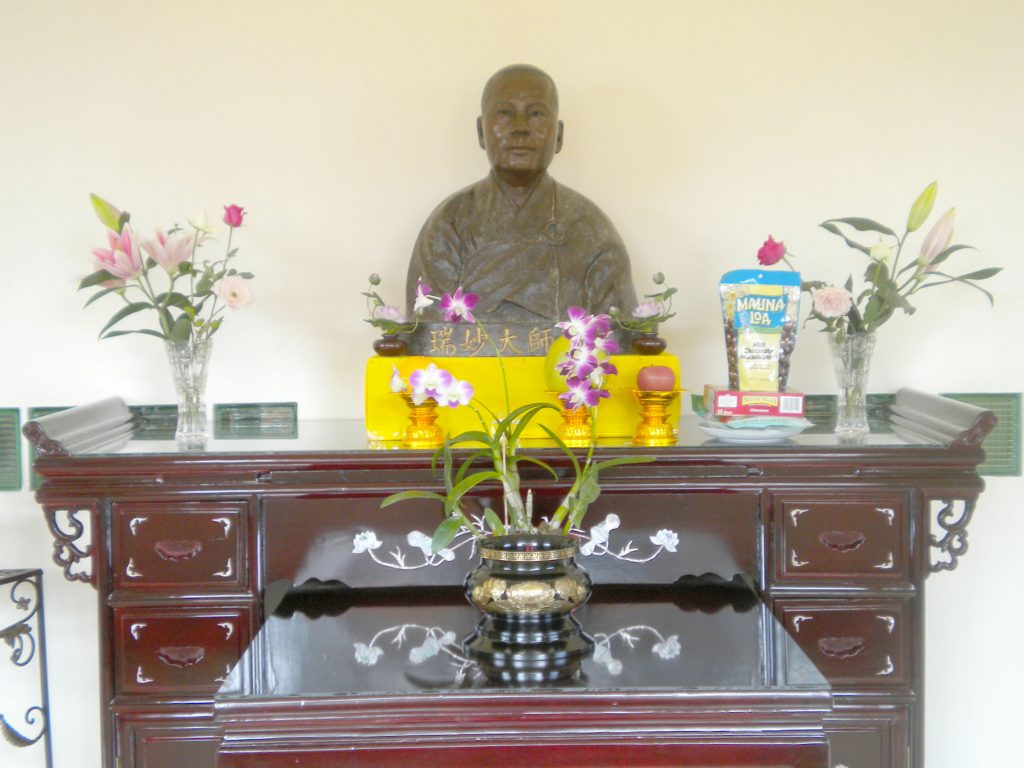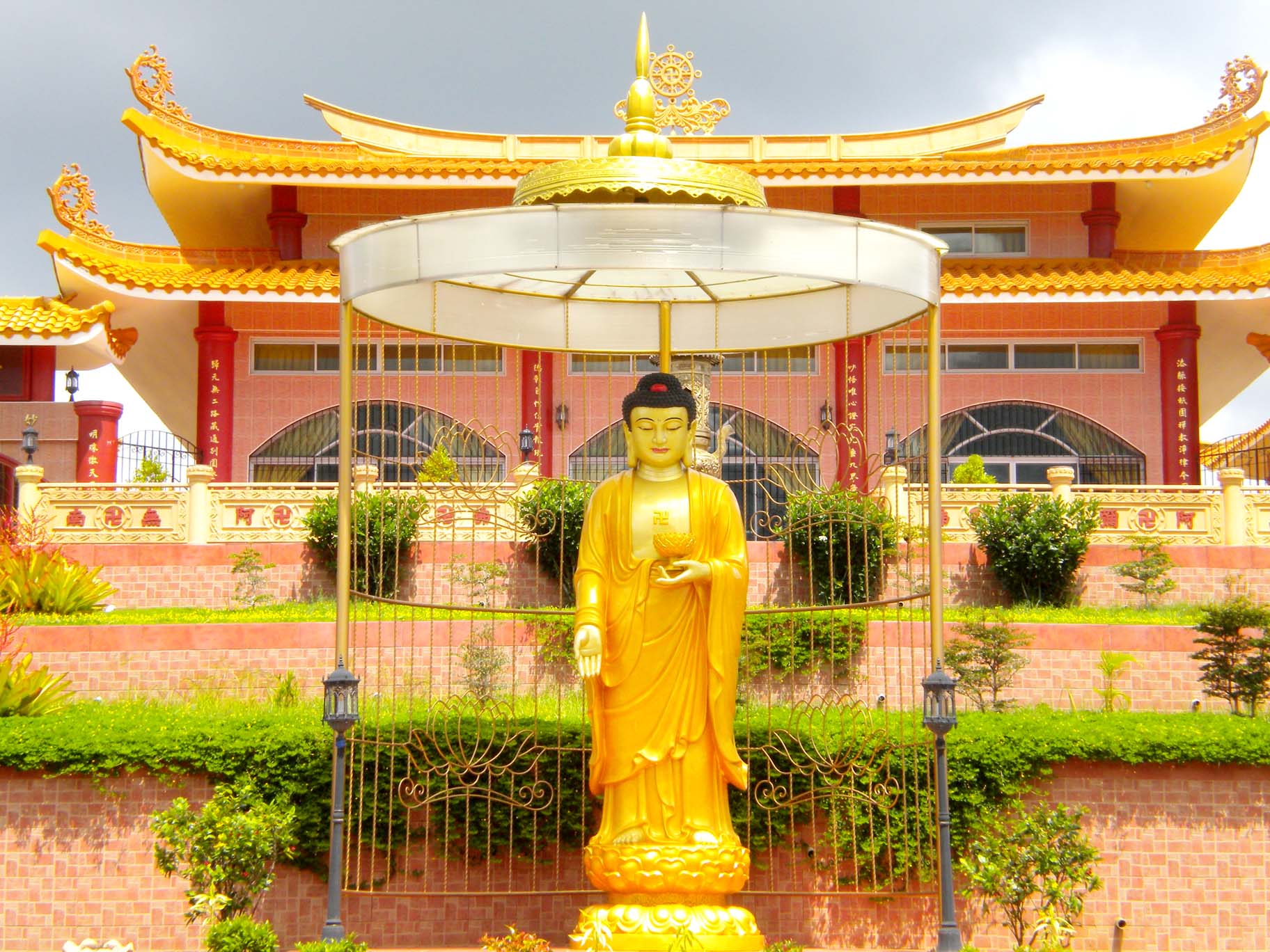Editors Note: This is the 26th of a series about the 36 Chinese Buddhist temples of the Philippines. Much of the information is from a thesis of Venerable Chuanmiao (Hsuan Chuang University, 2008), a Buddhist monk affiliated with the Thousand Buddha Temple in Quezon City.
26. Miao De Chan Temple 妙德禪寺
Metro Gate Tagaytay Estates Subdivision
Kaybagal, Tagaytay City Mobile: 0917-8450742 • 0922-8158893
It was the vision of Ruimiao (瑞妙), who had founded the Che Wan Temple (靈鷲寺) in Manila and other temples in Taiwan and Hawaii, for Buddhism to be adapted to Philippine culture and propagated among native Filipinos. She did not live to realize this dream. Her disciple, Jingping (淨平), succeeded in carrying it forward.
Jingping was born in Changhua (彰化), Taiwan, in 1959. At 18, she studied for a degree at a Buddhist institute in Taichung (台中).
After completing her degree and working at the institute for a few years, she spent four years in personal practice at a mountain retreat in Nantou (南投). In 1985, she met Ruimiao at the Wanfo Temple (萬佛寺) in Taichung and decided to be ordained as her disciple. That same year, she went to Manila to assist at the Che Wan Temple.
Given her formal Buddhist education, she was qualified to teach and organize Buddhist classes. She did so with Hengji (恆繼) of Holy Buddhist Temple (觀音寺), using the facilities of the Hwa Chong Temple (華藏寺) in Malabon. She also served as principal of Samanthabhadra Institute in Cebu (宿務普賢學院) from 1999- 2005. During this latter period, she was able to secure the property in Tagaytay City, and construction began in 2004. The temple formally opened in 2006.
Main buildings. The temple compound is inside a quiet residential subdivision. A life-size statue of Amitabha Buddha greets visitors at the main entrance, and a circular uphill road leads to the temple buildings. The temple hall is at the center, flanked by the Miao De Buddhist Institute (妙德佛學院) building on the left, and the living quarters and refectory on the right. The three Buddhas are enshrined in the temple hall, and side chapels are dedicated to Guanyin and Ksitigarbha. Behind the main shrine is a memorial altar with the bust of Ruimiao.

Leadership and primary activities. Jingping has been abbess since 2006. One nun-disciple and a few lay devotees assist her in Tagaytay. There are not many regular devotees at the temple, but chanting services are organized anyway at the beginning and end of the lunar year, the Guanyin and other selected Buddhist feast days.
The institute runs a residential summer program in April and May. University students – education majors – participate in the program. It is supported by affiliated lay associations. The Miao De Bodhisattva Society (妙德菩薩學會) introduces Buddhism to the students on two Sundays each month using rooms at the Hwa Chong Temple. The society also staffs a study center on Masangkay Street in Binondo, and a smaller center near the temple in Tagaytay.
Various classes promoting the Confucian text for children, Dizigui (弟子規), have been organized in English, Filipino, and Chinese, to student audiences in Manila and Tagaytay.
More than 75 students have graduated from the society, and at any one time there are about 80 who are doing university studies. The temple and its attached associations hope these future teachers will play a role in introducing Buddhism to younger generations of Filipinos. The society also organizes a Vesak Day celebration at Manila’s Robinsons Mall every April. — First published in Tulay Fortnightly, Chinese-Filipino Digest 26, no. 1-2 (June 18-July 8, 2013): 25.





